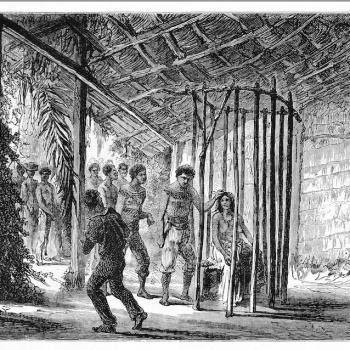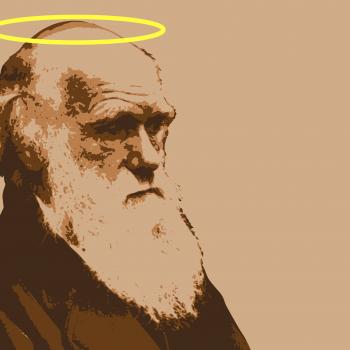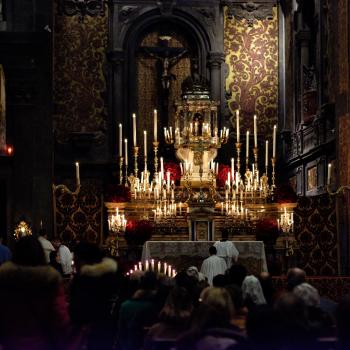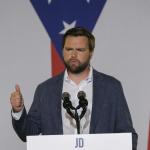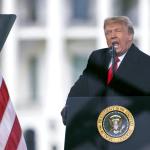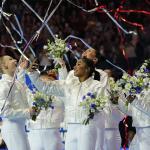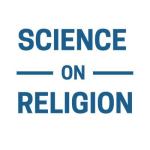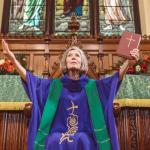Nicholas C. DiDonato

All too often, religious believers and non-believers alike assume a conflict between religion and science. Popular writers and much of the media seem to enjoy pitting the two against each other, and they paint a picture of the faithful and scientists in a perennial war. The historical problems with this fabricated picture aside, it remains an empirical question whether scientists actually see science as inherently conflicting with religion. Sociologists Elaine Ecklund, Katherine Sorrell (both of Rice University), and Jerry Park (Baylor University) investigated this matter and found that only a minority of scientists see religion and science as inherently in conflict.
Ecklund, Park, and Sorrell want to question much of the past sociological research that has supposedly shown the incompatibility between religion and science. They point out that such studies have simplistic notions of religion and science. Regarding religion, these studies typically only ask scientists if they believe in God and how frequently they attend worship services. Upon finding below average responses, such studies assume all too quickly that scientific education leads to a lack of religion rather than digging deeper into what scientists mean by “religion.” Furthermore, not fitting into the conservative Protestant categories usually equated with “religion” in these studies does not necessarily make a person any less religious. Similarly, sociologists have frequently assumed that all scientists have the same understanding of science and have failed to explore the wide spectrum of philosophies about the nature of science and scientific knowledge. Different notions of science have different ways of interacting with religion.
Instead of assuming that religiosity means some brand of evangelicalism or Christian fundamentalism, the researchers wanted to conduct not only a survey but also personal interviews to learn how scientists actually treat religion. Likewise, they did not want to impose rigid definitions of “religion” or “science” beforehand but wanted to let the scientists make those distinctions for themselves.
To do this, they randomly selected 2,198 natural scientists (biologists, chemists, and physicists) and social scientists (sociologists, economists, psychologists, and political scientists) from America’s top 21 research universities. They relied on the University of Florida’s annual “Top American Research Universities” report to determine the best universities. The selected scientists received a web survey about religion and religious beliefs, and 75% of the 2,198 completed it.
So far, Ecklund, Park, and Sorrell had not done anything much different than previous sociologists. To keep to their commitment of letting scientists dictate the terms of their relationship with religion, they randomly selected 501 participants of those who completed the survey for an interview (at least 50 scientists from each of the seven disciplines). They completed 275 interviews.
The researchers began by asking the scientists how they understood the words “religion” and “spirituality.” After this, they asked how religion or spirituality influenced the scientist’s discipline and how the scientist perceived the relationship between science and religion. Importantly, the interviewer did not mention “conflict” between religion and science until later in the interview (question #6—see below), giving each scientist room to describe that relationship freely. Again, the researchers aimed to learn about the full range of ways in which scientists personally negotiate religion and science. All told, they asked the following set of questions in order:
- I’m going to use the words religion and spirituality interchangeably here, recognizing there is a lot of public discussion about the differences between these terms. Could you say a bit about how you understand the terms religion and spirituality?
- How do religion and spirituality come up, if at all, in the course of your discipline?
- How about in teaching, does religion or spirituality come up at all in interactions with students or teaching and in what kinds of ways?
- I’m also interested in the relationship between religion and your work as a scientist. How does religion (or spirituality) influence the work you do as a scientist?
- On the other hand, how does being a scientist (social scientist) (if it does at all) influence how you think about or view religion?
- Some say there is a “conflict between science and religion.” How would you respond to such a statement?
- How about now for you personally, how would you describe the place of religion or spirituality in your life?
- What religious or spiritual beliefs do you hold (religiously or spiritually speaking)?
- If you have a religious tradition, in what specific way does being part of that religious tradition influence your life now? What kinds of things do you do to practice being part of that religious tradition?
As the researchers put it, “Our study moves beyond the conflict paradigm and toward discovering when and how scientists see religion and science in conflict, what informs their vision, and the alternative models they develop for viewing the two entities.”
It should be noted that these interviews took place during 2005 – that is, during the frenzy of the Dover, Pennsylvania trial over intelligent design in the classroom. The researchers left it up to the scientists to bring up this topic (almost all scientists frowned upon intelligent design).
Contrary to popular belief, the researchers found, based on their interviews, that only 15% of scientists think that science and religion inherently conflict. The same exact percentage of scientists believe that religion and science can never conflict. The remaining 70% stated that conflict could occur under specific conditions. Scientists, far from being a monolithic group, mostly developed various complex and context-sensitive ways of discussing the relationship between religion and science.
Still, 15% of scientists saw religion and science as always in conflict. In general, they shared three beliefs: logical positivism, high trust in the scientific community, and a reduction of religion to fundamentalism. As logical positivists, these scientists believe that scientific knowledge is the only true kind of knowledge. Of course, from the early on, logical positivism struggled with the problem that its foundational claim (that all knowledge is scientific) itself is not a scientific claim but rather a philosophical one. As such, if it is true that all knowledge is scientific, then that claim must be false because that claim itself is philosophical and not scientific. For this reason (among many others) logical positivism became one of the most short-lived philosophical schools in history (though it obviously continues to find adherents among scientists).
The “always in conflict” group also held the scientific community in high esteem. They thought that the scientific community succeeds in barring personal bias from entering into results, and that scientists have an air of skepticism about them. Presenting findings to a community means that anyone can test and scrutinize the results.
Famously, Stephen Jay Gould, in his The Mismeasure of Man, showed how easily personal bias can creep into science. He looked at the results of the 19th century scientist Samuel Morton. Morton subscribed to polygenism, the belief that the different human races consist of separate species. To prove this, he collected skulls from all different kinds of peoples, and proceeded to fill the skulls with lead so he could measure their cranial capacity. He found that the different races had very different cranial capacities (and so very different intellectual abilities). Gould performed the same exact experiment and came up with very different results: the different races have very similar cranial capacities.
How could 19th century scientists confirm Morton’s findings while a 20th century scientist could not? Gould answers: “The prevalence of unconscious finagling… suggests a general conclusion about the social context of science. For if scientists can be honestly deluded to Morton’s extent, then prior prejudice may be found anywhere, even in the basics of measuring bones and toting sums” (55-56).
Finally, the “always in conflict” group tended to see all religion as fundamentalist. They think that religious people seek findings that support their belief and do not subject their beliefs to the rigors of impartial investigation. Religious “truth,” then, holds no weight of its own and cannot compete with science (because as logical positivists they think that all knowledge belongs to science). By reducing religion to its worst form, these scientists not surprisingly believe that religion and science conflict.
On the opposite end of the spectrum stands the 15% of scientists who think that religion and science never conflict. Broadly speaking, they fall into two categories. The first group said that religion and science deal with completely different subject matters and therefore cannot conflict in principle. For instance, science would handle empirical truth while religion would handle truth about meaning. As scientists, they could add nothing to a religious discussion. The second group, interestingly enough, thought that religion and science could not conflict because of the porous boundaries between the two. Science and religion mutually influence each other, provide valuable tools for answering questions, and have genuine knowledge. Science has boundaries that limit what it can know, but these same boundaries do not limit what religion can know (though of course religion has its own boundaries). Religion and science do not conflict because they work together in the pursuit of truth. They do not conflict because they overlap.
Lastly, the far majority of scientists (70%) stated that religion and science can sometimes conflict. They typically had in mind a specific religion or religious group that created conflict with science, but did not conclude from this that all religion must of necessity conflict with science. For example, they described good religion as “adaptable,” rooted in “moral principles,” encouraging a “plurality of beliefs,” and staying “in its domain.” The researchers identified three strategies this group of scientists used to negotiate the boundary between religion and science: redefining categories, integration models, and intentional talk.
Scientists who redefined categories redefined “science” by drawing upon religion and redefined “religion” by drawing upon science. Most commonly, religion does not conflict with science when defined as “spirituality.” The results of the web survey found that 68% of scientists consider themselves spiritual. They defined spirituality in a variety of ways: “from a vague feeling of something outside themselves to a deep and compelling, other-centered worldview that directed how they conduct research and interact with students.” Spirituality, free of large institutions, gave scientists insight into their science: spirituality transforms science from something hard and objective to something beautiful and wondrous. In other words, their science actually draws them into religion! Far from a dualistic world-view, the religious question of meaning directly intersects with empirical findings. To quote the researchers: “We found that scientists are not only pushing science into the realm of religion via spirituality (sic) they are also allowing insights from spirituality into their science.” In short, for those who redefine categories, religion at the institutional level can conflict with science, but not at the personal level.
Next, other scientists who said that religion and science can sometimes conflict looked to integration models. That is, they cited major scientists known for their religiosity as evidence that religion and science can live in harmony. Importantly, integration models often integrated science and institutional religion. Some scientists cited Francis Collins (an evangelical) and Kenneth Miller (a Catholic) as examples of scientists who integrated their profession with their faith. Even scientists who otherwise spoke negatively about evangelicalism or Catholicism lauded Collins, Miller, and their integration of religion and science.
Finally, scientists of the “can conflict” persuasion most often fell into the category of intentional talk. These scientists started conversations and actively dialogued about the religion and science issue. Some scientists who had no previous interest in religion found themselves talking about it because their students brought these concerns into the classroom. Rather than ignoring them, such scientists inquired further into the matter. Whether in their own classroom or in the larger public sphere, this third group of scientists directly engaged the issue, and sometimes found that the discussions caused them to reevaluate their own positions.
From all of this data, the researchers concluded that “…the either-or conflict paradigm is not the most accurate framing of the relationship between religion and science for this population. Further, we find that scientists generally do not compartmentalize science and religion as some other research might lead us to believe.” They continue: “Surprisingly, our findings reveal that these elite scientists do not parse out their beliefs about religion and science, segregating the two between their private and public selves, but that instead they build very coherent narratives to explain their understanding of the world, whether that understanding is scientific, spiritual, or religious. In other words, the respondents in general did not maintain one belief system when operating as scientists, only to trade that belief system for another when they leave work to go home.”
Ecklund, Park, and Sorrell have greatly problematized the tale that says as scientific education increases, religious belief decreases. Those who keep waiting for the “inevitable” downfall of religion may have to wait forever. The vast majority of scientists do not think that religion and science conflict, and therefore they do not think that advances in scientific knowledge somehow strike a blow against religion. In an era when so many see a conflict between religion and science, if scientists can develop sophisticated ways of navigating the religion and science issue, then there is certainly much hope for the rest of us.
For the full article, see “Scientists Negotiate Boundaries Between Religion and Science” in the Journal for the Scientific Study of Religion. See also Elaine Ecklund’s book Science vs. Religion: What Scientists Really Think.


